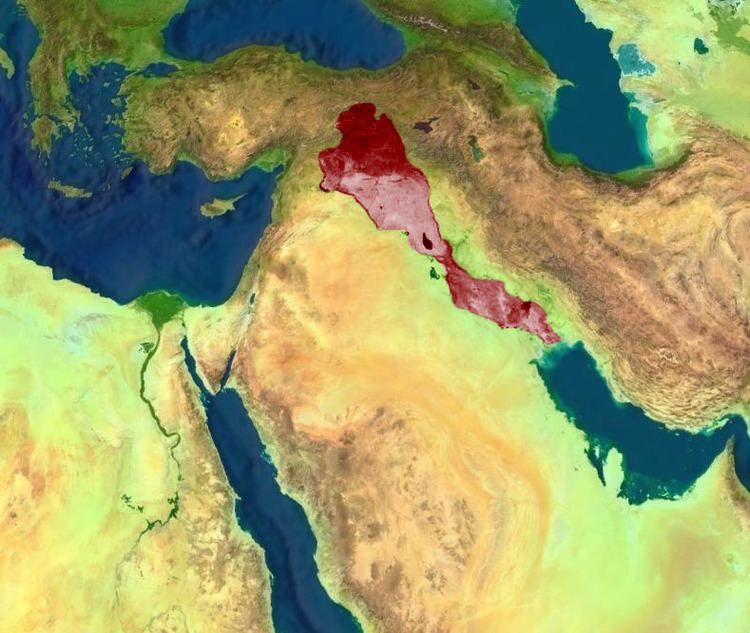 | ||
Many different kingdoms and empires existed within Mesopotamia, the land between the Tigris and Euphrates rivers in the Near Eastern region of the world. Several of these tended to derive from others and were then named after the former. One example of this was the Neo-Sumerian empire, with neo meaning "new" in this instance. Therefore, it was known as the "new" Sumerian empire, famous for lots of different types of art, specifically sculptures and architecture. The Sumer region was located in modern day Iraq.
Contents
History
After the fall of the Akkadian Empire, the Third Dynasty of Ur (Ur III) took over, which is also known as the Sumerian period. The Neo-Sumerian Renaissance took place around 2100 through 2000 BCE and had its capital state in the city of Ur in Mesopotamia. This period was named in respect to the Sumerian culture and literature, which is seen to be imperative to the art made at the time. The language spoken at the time was Akkadian, but Sumerian texts were being consolidated and promoted by the kings of the Third Dynasty of Ur, therefore emerging to the public through artistic pieces (Crawford 122). Neo-Sumerian art was centered around royalty and divinity.
Timeline
Kingship at the time of the Third Dynasty of Ur (Ur III)
Themes and Symbols
The art of the Neo-Sumerian period is known mostly for the revival of the Sumerian stylistic qualities. However, the art of the Third-Dynasty was also influenced by the Akkadians. Many large temples and ziggurats were built in this period, most of which possessed monumental staircases. These staircases were thought to be used by divinity, for ascending and descending between heaven and Earth. The temple at the bottom of the stairs was created as a home for the god/gods that the temple worshiped. As for the Neo-Sumerian sculptures, the many prayer statues of Gudea were the most common for this period. Usually these statues would present the patesi (see also, Ensi), with a shaved head and face, and wearing a monk like robe. The statues of human figures of the Neo- Sumerian period were known for their distinct eyebrows, lips, and fingers. Overall, the architecture, as well as the sculpture of the Neo-Sumerians, presented a strong theme of serene majesty and intense religious fervor. Other themes that were characteristic of Neo-Sumerian art are the themes of force and power, the creation of a strong capital, and religious ceremonial artifacts.
Architecture
Neo-Sumerian architecture was mostly based on the materials that were available in that demographic area. For this area, quality materials were not available so the people had to settle for tall reeds from marshes and mud-brick developments for housing and more permanent structures. There were many stages of architectural development and temple design. These designs started as basic ideas that progressed into more advanced designs. Beginning structures based on the primitive blueprints have small shrines, measuring only 12 ft x 15 ft, with one offering table in front of the niche. Many early temples were structured this way. In later years, old temples were strengthened and enlarged by adding buttresses. Typical characteristics of Neo-Sumerian temples were that they were located on top of ziggurats, a man-made mountain, and were the places where a god would be expected. Levels of elevation and staging were also typical characteristics of both temples and ziggurats. The name of the Neo-Sumerian specific ziggurat is the Ziggurat of Ur.
